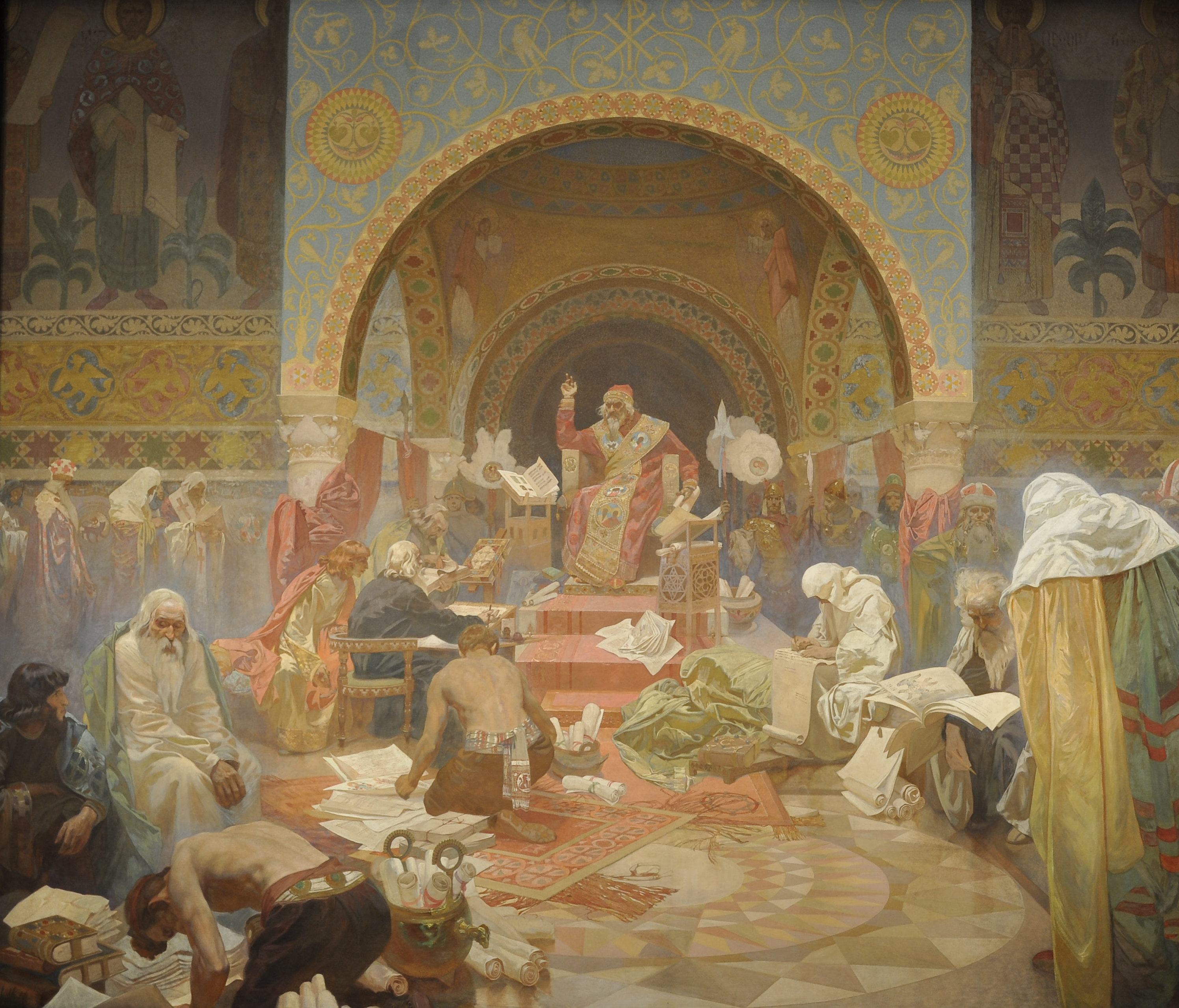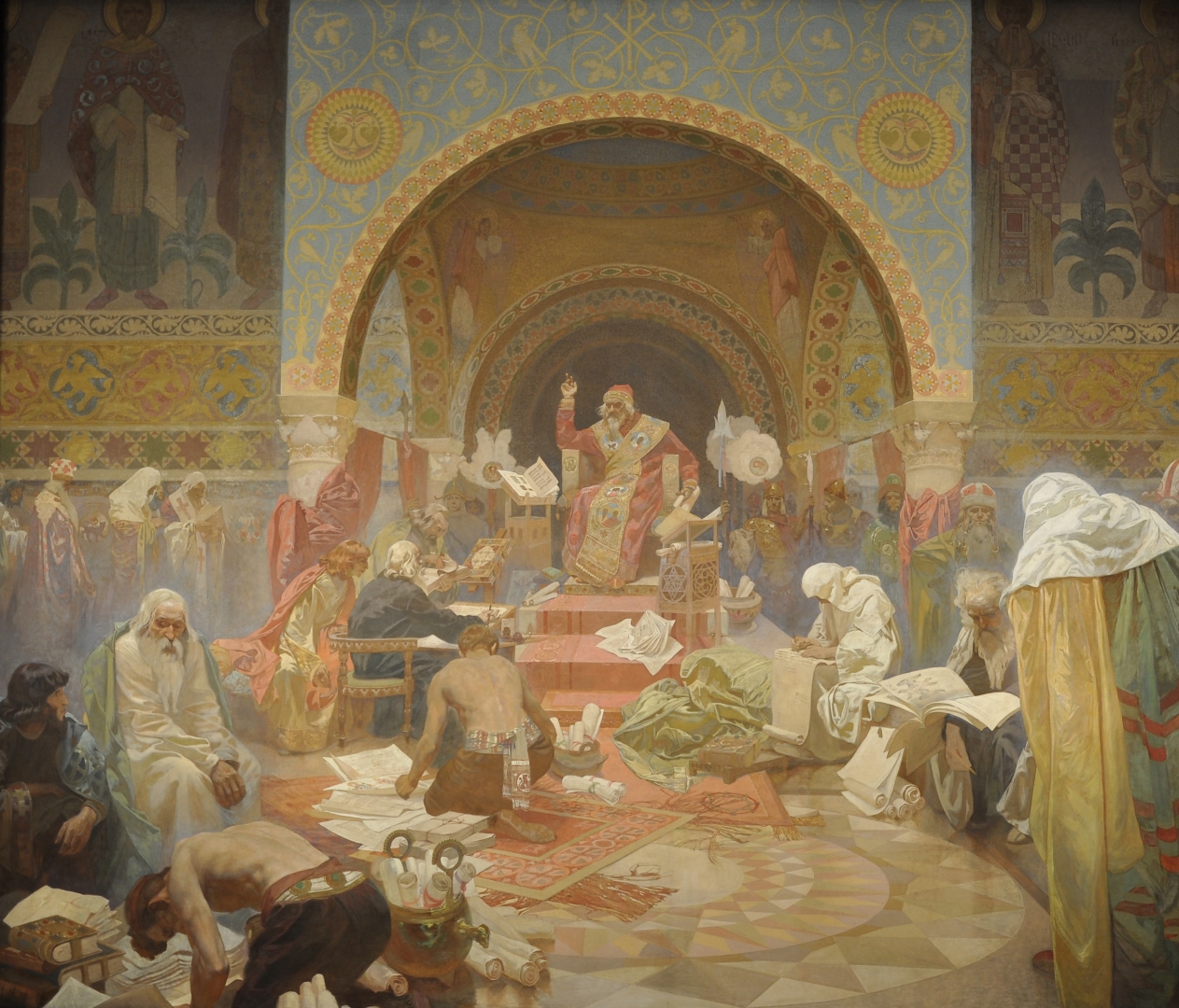TSAR SIMEON OF BULGARIA
The reign of Tsar Simeon at the turn of the 9th and 10th centuries represented the peak of medieval Bulgarian power and glory. After fierce fighting with the neighbours, he seized control over almost the entire Balkans and got very close to claiming the Byzantine throne. At the height of his power, he won the imperial crown for himself and Bulgaria.
When Bishop Methodius died in Great Moravia on April 6, 885, it sparked a dispute between supporters of Latin and Slavic liturgies. Although Methodius promoted Gorazd as his Moravian successor, the Roman Curia entrusted the administration of the Moravian Church to Bishop Wiching of Nitra and at the same time banned the use of the Slavic language in worship. Slavic priests were driven out of Great Moravia, and most of them found a home in Greater Bulgaria. Among them were Clement of Ohrid - pictured at the top left, the first Bulgarian bishop of Slavic nationality, and - in the upper right corner - Naun and Angelarij, who simplified Glagolitic to Cyrillic, the predecessor of the current Cyrillic alphabet.
Simeon was an educated man; he loved and spread art, especially literature. He declared the language of the Bulgarian Slavs to be the state and church language in 894 and supported the literary schools in Ohrid and Velká Pereslav. The painting shows him sitting on a throne in a palace in the capital city of Velká Pereslav and supervising the work of scribes who write down the elders' memories, so they do not fall into oblivion. The available literature is translated here, and monks transcribe and reproduce literary works.
The whole painting is stylised with Byzantine richness and opulence.

